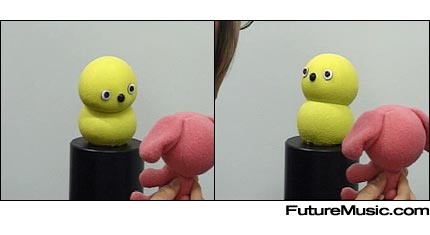Weekend Fun: Keepon Truckin’
Marek Michalowski of Carnegie Mellon University in Pittsburgh, PA, US, and Hideki Kozima of the National Institute of Communications Technology (NICT) in Kyoto, Japan, programmed the spongey, yellow snowman-like robot, dubbed “Keepon,” to detect the down beat in a song and boogie along in perfect time.

Inside Keepon are motors, wires and a mechanical device called a gimbal that manipulate’s the cuddly fella like a reversed marionette. Keepon responds by head-nodding, rotating, twisting and bopping in time to audio or visual stimulation. “The robot can dance either to sound or video,” says Michalowski. A very amateurish video produced by the researchers demonstrates what Keepon can do by dancing to a track by US rock band Spoon.
A robot that can dance is definitely amusing, but the developers have a more serious application in mind. Keepon has video camera’s for eyes and a microphone nose that enables it to track the motion of a person or another object in a very responsive manner. Michalowski, however, believes robots could usefully apply a sense of rhythm beyond the dance floor. In particular, during ordinary conversations and other interactions with humans. He hopes this will make robots move more like humans and make them more socially engaging.
Psychologists have shown that people are more engaging when they synchronise their movement to their voice or to the voice or movement of another person. Michalowski argues that robots will need a sense of rhythm if people are to accept them. “In the future you are going to be talking to some robot and just the ability of the robot to nod to what you are saying will make it easier to interact,” he says.
Michalowski utilized Max/MSP by Cycling ’74 to detect a beat through its nose mic automatically. The software interprets sound waves and focuses on sections most likely to represent the beat. And this is what separates it from other “dancing” robots, which are entirely pre-programmed. “The important thing is that Keepon is capable of detecting rhythm,” says Fumihide Tanaka, who heads the Qrio Project at Sony Corporation in Tokyo, Japan.
To get the robot to dance, the team then wrote software that converts the beat detected by Max/MSP into a motion. It varies Keepon’s movements and changes the number of movements per beat to keep things interesting. Michalowski plans to carry out a controlled study to determine whether the robot can pick up on other rhythms, such as those in human speech, which are more difficult to discern.
Watch the yellow blob get down to Spoon and learn more about Keepon.







